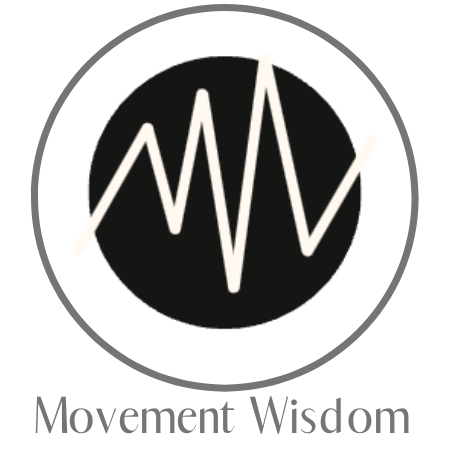
Do people often describe you as a goal-oriented go-getter? Are you always full of energy while your mind is full of thoughts and ideas? These are common characteristics of someone with a Pitta dosha constitution.
Pitta types are ambitious, determined, strong-willed, and intelligent. However, when Pitta energy becomes excessive, it can negatively affect the body and mind.
While yoga is a great way to balance the doshas, there are certain things you should know when practicing yoga for Pitta dosha.
In this article, we're exploring the Pitta dosha and how you can best use yoga to keep it in balance.
Article content:
(Click any link below to jump directly to section)

THE YOGA TEACHER TRAINING
YOU'VE BEEN LOOKING FOR.
Online Yoga Teacher Training Offers
- Affordability
- Flexibility
- Certification
- Lifetime access
⬇Click below to discover the best Yoga Alliance registered yoga teacher training online⬇
Benefits of yoga for Pitta dosha
Yoga for Pitta dosha helps calm the mind and improve digestion. However, if you have a dominant Pitta dosha, choosing the right yoga style is essential.
People with a Pitta dosha constitution are always on the go, jumping from one thing to another. However, the busier they become, the more out of balance their Pitta dosha gets.
Therefore, slow and gentle yoga styles like Yin and Restorative yoga work wonders at calming excess Pitta. These yoga styles promote stillness and silence, something Pitta types need more of.
Yin and Restorative yoga can pacify Pitta dosha by:
- Cooling the body – Yin is associated with the moon and, thus, has cooling properties.
- Slowing activity in the mind – Yin and Restorative yoga force the body and mind to become still, which calms the nervous system and reduces repetitive thoughts.
- Promoting compassion and kindness – Yoga can help competitive Pitta types control their anger and irritability.
- Improving digestion – Twists, side bends, and prone backbends release heat and tension in the digestive organs.
Pitta types should avoid fast, dynamic yoga styles that increase internal heat, such as Vinyasa and Ashtanga yoga, as these styles could increase Pitta rather than soothe it. Moreover, choose moon salutations (Chandra Namaskar) instead of sun salutations, as these are more cooling.
5 yoga asanas to balance this dosha
According to Ayurveda, standing poses increase heat in the body. However, if a standing pose also involves a side bend or twist, this helps to release heat and tension in the navel area.
Therefore, asanas like Extended Side Angle (Utthita Parsvakonasana) and Twisted Triangle (Parivrtta Trikonasana) are suitable standing postures for Pitta types.
Backbends are known as heating asanas, while forward folds are cooling. A few gentle, prone backbends are ok, as these compress the abdominal organs.
Here are five yoga for Pitta dosha poses you can try:
1. Child’s Pose (Balasana)

The child's pose is a calming, cooling forward bend that helps to ease restlessness and headaches. Plus, as you fold your torso over your thighs, there is a slight compression to the abdominal organs, stimulating digestion.
Here's how to do Child's pose:
- Sit on your heels with your knees together. Slowly walk your hands forward as you fold your torso over the thighs.
- Extend your arms by walking your fingertips to the top of the mat while pressing your buttocks to your heels. Rest your forehead on the ground or a block.
- Take at least 10 breaths here. Or for Yin style, stay here for 2-3 minutes, breathing slowly and deeply.
2. Sphinx Pose

Sphinx pose is a gentle prone backbend practiced in Yin and Restorative yoga. It opens the heart and lungs while gently compressing the digestive organs. Thus, it benefits people experiencing poor digestion due to excess Pitta.
Here's how to do Sphinx Pose:
- Come onto your belly with your legs extended behind you.
- Place your palms alongside your head as you press into your forearms to lift the chest.
- Tuck your elbows into your ribcage. The hips should remain on the mat.
- Keep pressing the forearms into the mat as you gaze forward and hold for 10 to 20 breaths.
- To release, slowly lower back down, take a few moments in this neutral position, and then come into a forward bend as a counter pose.
3. Supine Twist (Supta Matsyendrasana)

This gentle reclined twist squeezes the digestive organs, releasing heat and tension in the navel area. As this is often practiced towards the end of the session, it is a cooling asana rather than a heating one.
Here's how to do Supine Twist:
- Lay on your back and bend your right knee, hugging it towards your chest.
- Using your left hand, gently pull the knee across your body to the left side.
- Extend your right arm at shoulder height with the palm facing up. Keep your left hand on the knee and gaze at your right hand.
- Stay here for 2 – 3 minutes before changing sides.
4. Revolved Head To Knee Pose (Parivrtta Janu Sirsasana)

Revolved Head To Knee Pose is a seated side bend and hip opener. The side-bending action helps to improve digestion, while the seated position cools the body and calms the mind.
Here's how to do Revolved Head To Knee Pose:
- From a seated position, open your legs wide. Then, bend your left knee, placing the left foot against the inner right thigh.
- Ensure your spine is straight – you might find sitting on a block prevents you from rounding the back.
- Slide your right arm down the right leg.
- As you inhale, reach your left arm up, lengthening the spine. As you exhale, lean over to the right, reaching the left hand towards the right foot and bringing the left arm close to the left ear.
- Keep pulling your left shoulder back to keep the chest open. If you're flexible enough, you can grab the right foot with one of both hands.
- Hold for 5 – 10 breaths, release, and then change sides.
5. Savasana

People with Pitta dosha constitutions often struggle with stillness. As a yoga instructor, I've noticed Pitta types find Savasana incredibly difficult and often want to skip this final posture.
One of my teachers once told me, “The pose you find the hardest is the one you need the most.” So if you find lying in Savasana for 2 minutes challenging, you should force yourself to stay there for 5 minutes.
Savasana is essential as it calms the central nervous system and the mind. It is also a cool-down posture that resets the body's temperature. Therefore, it is particularly beneficial for Pitta types who have excess heat in their body.
Here's to do Savasana:
- Lay down on your back with your legs apart, toes turned out, and arms resting by your sides.
- Close your eyes and feel the weight of your head and shoulders drop down into the mat.
- Make any adjustments you need to find total comfort. Place a bolster under your knees if you feel tension in your lower back.
- Ensure every part of your body is fully relaxed. Do a body scan from your head to your toes. Note any areas of tension or discomfort and consciously relax them by breathing into the body part.
- Focus on your breath, consciously slowing the inhalation and the exhalation. I recommend doing several rounds of box breathing (breathing in for 4, holding for 4, exhaling for 4, and holding for 4) before allowing your breath to return to normal.
- Try to keep your awareness on your breath. Whenever you notice your mind wandering, return to your breath.
- Stay here for 5 minutes or more. When ready, slowly come out by wiggling your toes and fingers, stretching your arms overhead, and then rolling onto your side.
⬇Yoga Alliance registered yoga teacher trainings you should look into⬇
What happens when Pitta dosha is out of balance?
When our Pitta dosha is out of balance, we experience inflammation in the body and irritation in the mind due to excess heat generation.
When Pitta dosha is out of balance you may experience:
- Constantly feeling hungry
- Digestive upset
- Skin flareups like acne
- Oily skin
- Sensitivity to hot temperatures (feeling hot all the time)
Mentally, excessive Pitta can make you feel:
- Angry or aggressive
- Easily irritable
- Overly competitive
- Restless
- Prone to mood swings
- Impatience,
- Feeling criticizing or judging towards others
What is Pitta dosha?

The Pitta dosha is associated with the fire and water elements, described as hot, intense, and oily. Pitta is one of the three Ayurvedic doshas, best described as energy patterns in our bodies.
“Pitta” translates roughly as “that which digests things” or simply “fire.”
Its primary purpose is energy and heat generation, digestion, and metabolism.
But it doesn't just help us digest food. Pitta also plays a role in processing and ‘digesting' sensory perceptions, thoughts, knowledge, and experiences.
When our Pitta dosha is balanced, we have a high level of determination, confidence, and desire for success, and we can learn things quickly. Physically, we have a quick metabolism, good circulation, and healthy skin and hair.
Takeaway on yoga for Pitta dosha
Yoga for Pitta dosha can be incredibly beneficial if you’re experiencing excess heat, poor digestion, or excessive mental activity. However, remember to choose slow, gentle styles over fast-paced, dynamic ones. Moreover, practice in a cool, dark environment to maximize the Pitta-pacifying benefits.
Some online yoga studios, online yoga teacher training programs, and brands that we write about may offer us a small commission should you decide to make a purchase or signup after reading our content. Thank you for enabling us to exist!








